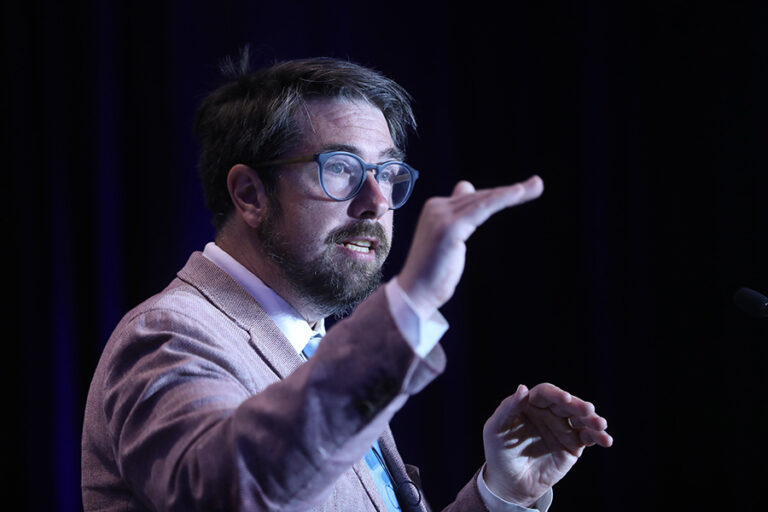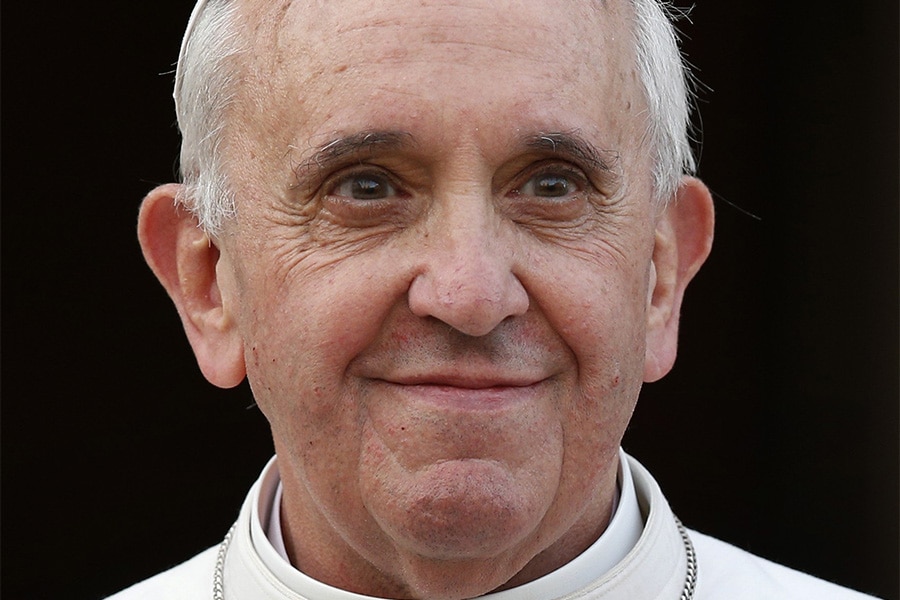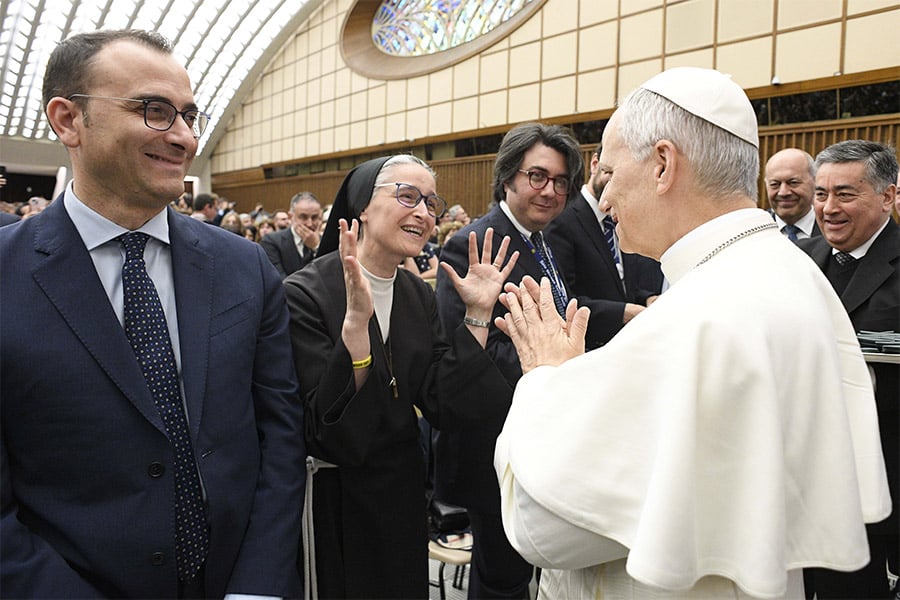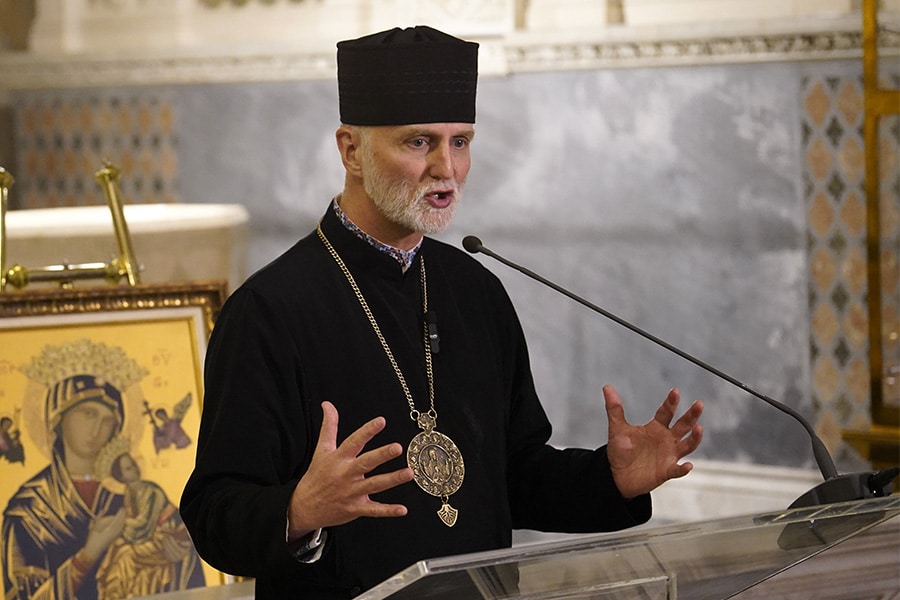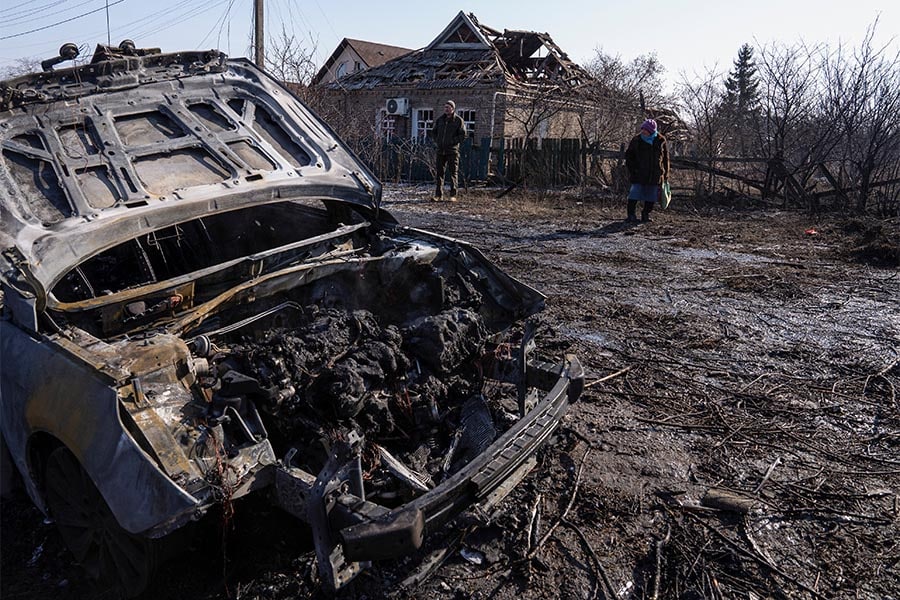PORTLAND, Ore. (CNS) — Catholic journalists face a twofold lack of trust as reporters who cover the church, a Catholic theologian reminded them July 6 at the annual Catholic Media Conference in Portland.
He urged them to find a way forward that brings Catholics together and also reaches out to the public at large with nuanced, not simply reactive, reporting and by providing necessary context, or the bigger picture, to their readers and viewers.
Put another way: “Journalists and communicators have a role to play here, to let the eucharistic mystery of the church manifest itself for the life of the world,” said Timothy O’Malley, director of education at the McGrath Institute for Church Life at the University of Notre Dame.
“The church is experiencing a crisis related to communications,” he said during his keynote address, adding that it can’t be solved by a new technique such as a better way to use Twitter or TikTok.
It’s bigger than that because, he said, so many people think that “the church, along with a variety of other institutions, is no longer worth listening to.”
O’Malley has seen this particularly in his work with college students, who he said for the most part have been “marginally Catholic to begin with.” He added that many also had a “benign indifference” to recent reports of clergy sexual abuse, “not because they were apathetic about sexual abuse” but because they just “didn’t care that much about the church.”
And the double punch here is that he said today’s college students are “basically apathetic toward journalism too.”
It’s not just young people either. O’Malley reminded the crowd of Catholic reporters, editors and diocesan communicators that a recent Reuters report showed that the United States has “the lowest trust in media among 46 countries” — with only 29 percent of Americans trusting it.
Before any of the group in the Portland hotel ballroom walked out in despair, the theologian pointed out another discouraging observation.
“With the church, it’s even worse,” he said, noting that Catholics have been told that the church is “a eucharistic communion manifesting the love of the triune God” but instead what Catholics often see is “endless conflicts, hypocrisy, bishops fighting with one another, the confusion of the Gospel with political ideology and the replacement of serious thought with propaganda.”
Instead of turning away from what they are up against, the group, O’Malley urged, should address these challenges head-on, saying the future of Catholic journalism requires it.
A first step is to “understand a bit more about the crisis of authority that is infecting church,” which he said some blame on years of poor catechism while others say the problem is that church leaders have failed to adapt to the modern world.
As he sees it, both of these criticisms fall short. Instead, it has to do with people not having a sense that the church offers anything of note and Catholics being increasingly impatient with the church’s “failures and foibles.”
So how can Catholic media respond?
O’Malley told the group they had likely already come up with some solutions about telling the story of the church in a new light or using best media strategies to potentially rebuild trust in the institutional church, ideas he said were good, but not enough.
He said Catholic journalists should address the overall distrust of the media by being sure to provide something different: being bias free and also offering nuances with something “more akin to contemplation.”
With this in mind he said he would “encourage bishops to recognize that Catholic journalists — who operate with charity — must continue to be independent.”
He also urged Catholic journalists to “unplug from the mimetic violence that feeds so much Catholic journalism today,” urging them to also not see each other, from different publications, as enemies.
“We need, to once again, slow down,” he said, stressing the importance of showing empathy with those they disagree with to manifest God’s love to the world.
The theologian, who planned to continue the discussion in a smaller group setting later in the day, said Catholic journalists needed to report on local events but they also needed to reflect on the broader scope, adding: “Our neighbor’s joys and sufferings are our joys and sufferings, no matter if they’re Catholic or not.”
He also urged them to engage the public sphere looking specifically at issues such as homelessness or violence and questioning how the church can respond.
O’Malley touched on the concept of synodality, or listening to one another and working together in the church, which was the topic of the conference’s first keynote address July 5 by Xavière Missionary Sister Nathalie Becquart, undersecretary of the Synod of Bishops.
Sister Becquart spoke about the role of communicators in the ongoing synod process which she said was the “most important historical event since Vatican II.”
She pointed out that even though most of the synod sessions have finished at the local level, the work is far from over and the stories of the process itself need to be told.
She urged members of the Catholic media to listen to the stories and share them.
The four-day conference in Portland was the first in-person conference for the association in three years. It involved sessions on avoiding burnout, developing spirituality, finding humor, and improving websites and social media.
Follow Zimmermann on Twitter: @carolmaczim
Read More Journalism
Copyright © 2022 Catholic News Service/U.S. Conference of Catholic Bishops

